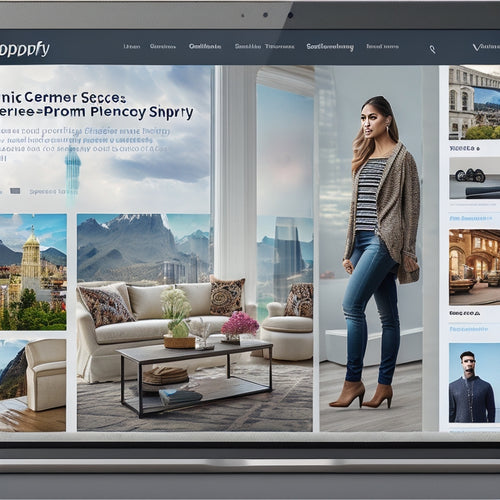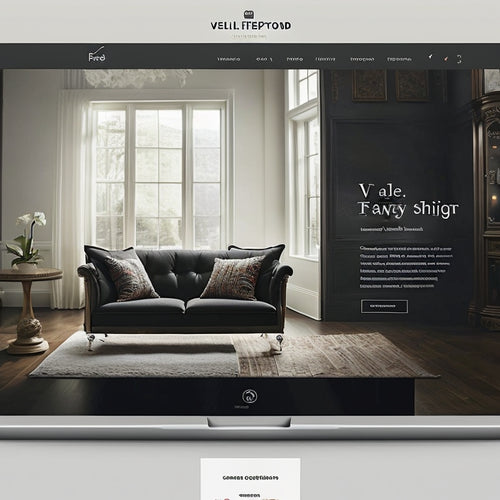
Why Do Customers Abandon You? Digital Answers
Share
You're likely losing customers due to unnoticed frustrations and unmet expectations driven by hidden pain points, inefficient personalization, disconnected omnichannel experiences, and inadequate real-time feedback and response strategies. These issues often stem from a lack of empathy and understanding of your customers' unique needs and preferences. By failing to address these pain points, you're inadvertently creating barriers to loyalty and retention. But it's not too late to turn things around. By understanding the root causes of customer abandonment, you can start to build a more customer-centric approach that fosters trust, loyalty, and appreciation, ultimately driving growth and revenue.
Key Takeaways
• Customers abandon due to unaddressed pain points, which can be hidden and differ from stated issues, requiring empathy and active listening to uncover.
• Lack of personalization in the customer journey leads to disengagement, as customers expect dynamic content and tailored support that meets their unique needs.
• Inconsistent omnichannel experiences, with disjointed messaging and tone, erode trust and drive customers away.
• Failure to respond promptly to customer feedback and issues demonstrates a lack of commitment to satisfaction, leading to abandonment.
• Proactive issue resolution strategies are essential, as anticipating and addressing pain points prevents complaints and showcases a commitment to customer satisfaction.
Identifying Hidden Pain Points
When you ask your customers about their pain points, they often won't tell you the whole story - and that's because they may not even realize what's really bothering them. They might complain about a specific feature or process, but the root cause of their frustration might be something entirely different.
To truly understand their pain points, you need to dig deeper. Identifying customer frustrations requires empathy and a willingness to listen between the lines. By doing so, you'll uncover the hidden pain points that drive customers away.
Improving user experience starts with understanding these pain points and addressing them effectively. It's not just about fixing a specific issue, but about creating a seamless experience that meets their needs and exceeds their expectations. By doing so, you'll reduce friction, increase loyalty, and ultimately, drive growth.
Personalization in Customer Journey
As you work to eliminate friction and improve user experience, you'll find that personalization plays a significant role in creating a customer journey that truly resonates with your audience. By understanding customer preferences, you can craft tailored interactions that make them feel seen and valued. This, in turn, fosters loyalty and retention.
Here are four ways to infuse personalization into your customer journey:
-
Dynamic content:
Use data to create dynamic content that speaks directly to individual customers' needs and interests. -
Segmented messaging:
Divide your audience into distinct segments and tailor your messaging to each group's unique preferences. -
Real-time recommendations:
Use machine learning algorithms to offer personalized product recommendations in real-time.
-
Contextual support:
Provide support that's attuned to the customer's current situation, such as offering assistance with a specific product or service.
Seamless Omnichannel Experience
You expect a unified experience across all touchpoints, and so do your customers - which is why delivering a seamless omnichannel experience is essential for building trust and loyalty.
When you interact with a brand, you want consistency in messaging, visual identity, and tone - whether it's on social media, email, or in-store. Your customers crave this cohesion too. In fact, 73% of customers use multiple channels to shop, and 71% expect a unified experience.
By optimizing each channel, you can create a harmonious experience that fosters customer engagement. This means synchronizing your online and offline channels to provide a cohesive narrative, streamlining interactions to reduce friction, and using data to tailor your messaging.
Real-time Feedback and Response
Customers expect instant gratification, and real-time feedback and response have become the norm, allowing you to tap into their thoughts and feelings at the precise moment they're experiencing them. This instant connection provides a unique opportunity for you to take immediate action and address concerns before they escalate. By doing so, you'll not only showcase your commitment to customer satisfaction but also foster a deeper level of customer engagement.
Here are four ways to leverage real-time feedback and response:
-
Respond promptly: Reply to customer feedback and concerns in real-time, demonstrating that you value their time and opinions.
-
Personalize interactions: Use customer feedback to tailor your responses and create a more personalized experience.
-
Identify patterns: Analyze real-time feedback to identify recurring issues and make data-driven decisions to improve your customer experience.
- Show empathy: Acknowledge customers' emotions and concerns, demonstrating that you genuinely care about their experience.
Proactive Issue Resolution Strategies
By anticipating and addressing potential pain points, you can turn would-be complaints into opportunities to showcase your brand's commitment to exceptional customer service. Proactive issue resolution strategies are pivotal in preventing customer frustration and subsequent abandonment.
When you identify and resolve issues before they escalate, you demonstrate a customer-centric approach that fosters trust and loyalty. This proactive approach can markedly improve customer retention rates, as customers feel valued and appreciated.
Service recovery is a critical component of proactive issue resolution. When mistakes happen, it's vital to respond promptly and effectively to rectify the situation. This not only resolves the issue at hand but also shows customers that you're dedicated to making things right.
Effective Loyalty Program Design
Well-crafted loyalty programs can be a powerful catalyst for fostering long-term relationships, as they tangibly demonstrate a brand's appreciation for repeat business and encourage continued loyalty. When you invest in a loyalty program, you're investing in your customers' happiness and loyalty.
A well-crafted program can increase customer engagement, retention, and ultimately, revenue.
Here are some key elements to contemplate when designing an effective loyalty program:
-
Reward incentives: Offer rewards that are relevant and valuable to your customers, such as discounts, free products, or exclusive experiences.
-
Clear communication: Clearly communicate the program's benefits, rules, and rewards to avoid confusion and foster participation.
-
Personalization: Tailor your program to individual customers' preferences and behaviors to increase engagement and loyalty.
- Ease of use: Make it easy for customers to earn and redeem rewards, with minimal hassle or complexity.
Data-Driven Customer Insights Tool
Tapping into the full potential of your loyalty program requires utilizing a data-driven customer insights tool that assists you in understanding what influences your customers' behavior and preferences. With this tool, you'll gain a deeper comprehension of your customers' needs, desires, and pain points.
You'll be able to analyze their behavior, identifying patterns and trends that inform your loyalty program design.
Through customer behavior analysis, you'll discover what drives your customers to engage with your brand, what fosters their loyalty, and what leads them to part ways with you. This insight will enable you to create targeted loyalty initiatives that resonate with your customers.
Additionally, predictive analytics insights will help you predict customer churn, allowing you to proactively address potential issues and prevent losses. By utilizing these insights, you'll be able to refine your loyalty program, enhance customer retention, and stimulate growth.
With a data-driven customer insights tool, you'll have the ability to make informed decisions, optimize your loyalty program, and ultimately, achieve business success.
Frequently Asked Questions
What Is the Ideal Customer Feedback Response Time to Prevent Churn?
You should respond to customer feedback within 24-48 hours to prevent churn, as timely feedback analysis and implementation of retention strategies show you value their opinions, fostering trust and loyalty.
Can Customer Loyalty Programs Be Too Generous and Backfire?
You need to balance your loyalty program's generosity, as over-the-top rewards can create unrealistic expectations, leading to disappointment and decreased loyalty when you can't sustain them, ultimately backfiring on your generosity impact.
How Do I Measure the ROI of a Seamless Omnichannel Experience?
You'll accurately measure the ROI of a seamless omnichannel experience by leveraging data analytics to track cross-channel customer behavior, boosting customer engagement and identifying areas for improvement to maximize your investment.
Can AI Completely Replace Human Customer Support Agents?
You're wondering if AI can completely replace human customer support agents, but the truth is, AI has limitations, and customers crave the human touch, empathy, and emotional intelligence that only human agents can provide.
What Is the Minimum Net Promoter Score for a Healthy Business?
You're exploring the NPS landscape, searching for the sweet spot where customer satisfaction blooms and retention flourishes. Aim for a minimum NPS of 30, but don't settle - track trends to stay ahead of the curve and fuel your business's growth.
Related Posts
-
Top Shopify Apps for Boosting Sales and Conversions
Are you struggling to boost sales and conversions on your Shopify store? Look no further! We've got the scoop on the...
-

Why Is Shopify Speed Optimization Important
This article aims to provide an objective and informative analysis of the importance of Shopify speed optimization. ...
-

What Is the Difference Between a Shopify Theme and A Page Builder
This article explores the distinctions between a Shopify theme and a page builder. The objective is to provide a com...

